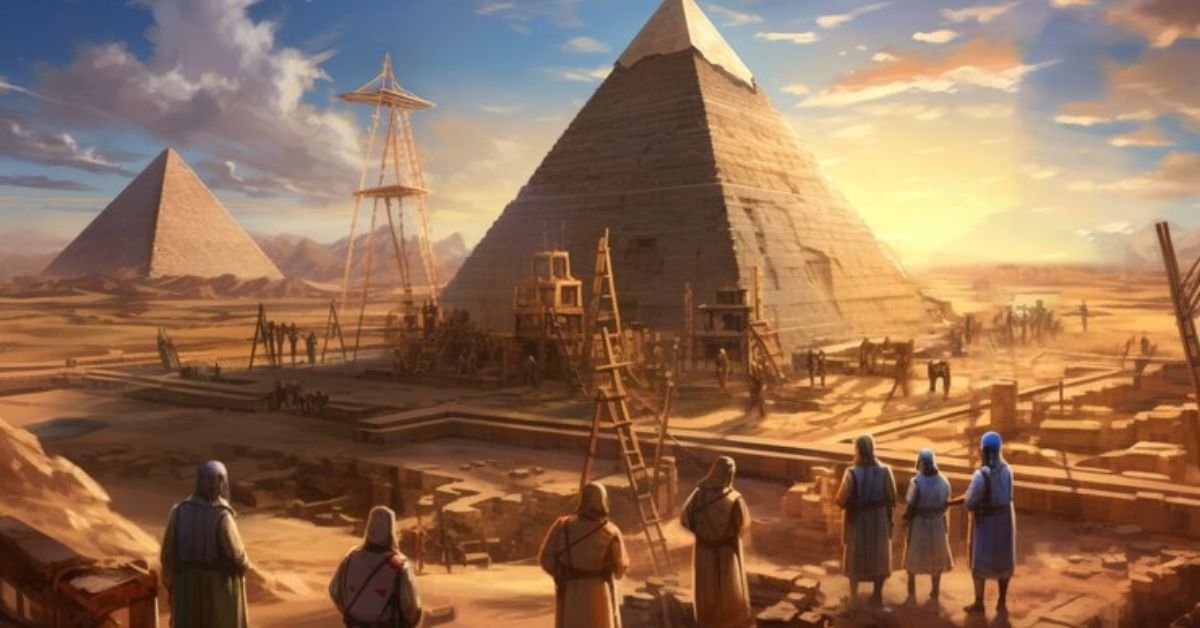Rather from being only historical relics, ancient works of art provide light on the ideas, values, and practices of prehistoric humans. Crafted by ancient peoples thousands of years ago, this art provides us with a lasting heritage that reflects their beliefs, legends, and way of life. Intricate sculptures, meaningful pottery, and enigmatic cave paintings are just a few examples of how ancient art reveals the beginnings of creativity. What follows is an examination of the nature and relevance of Ancient Artz, as well as a selection of the most fascinating works from across the globe.
What is Ancient Artz?
The term “ancient artz” is used in a lighthearted, contemporary sense to describe a variety of artistic expressions produced by prehistoric societies. The art of ancient Egypt and Greece includes monumental sculptures as well as prehistoric cave drawings, showcasing some of the earliest manifestations of human creativity. Paintings, sculptures, ceramics, and other items are commonplace in Ancient Artz and often reveal something new about the culture that created them.
You Might Also Like: ATFBORU: The Next Big Trend You Need to Know About
Art from antiquity had multiple useful functions. The practices, beliefs, and routines of long-gone civilizations are preserved in this historical record. Artworks from antiquity sometimes served ceremonial or religious functions, providing insight into people’s early spiritual beliefs and their relationships with the natural world. Pottery for food storage and ornamental items for special occasions are two examples of the more utilitarian types of handicraft. Every artifact reveals something new about the ancient peoples’ worldview, illuminating their values and the way they made sense of their surroundings.
Origins of Art: Prehistoric Beginnings
Creating art was an early human activity that dates back thousands of years to the Stone Age. Artworks such as cave paintings, carvings, and sculptures were produced by early humans, who were commonly known as hunter-gatherers. The world-renown Lascaux cave paintings in France are one of the best-known examples; they date back more than 17,000 years. Prehistoric peoples may have expressed themselves creatively in response to their environment and ways of survival through these paintings, which typically include animals and hunting scenes. Art from prehistoric times is among the earliest examples of human creativity since it dates back to when people started keeping visual records of their daily lives.
The Art of Ancient Egypt
There is no mistaking the distinctive style and symbolic meaning of ancient Egyptian art. Great pyramids, elaborate carvings, and hieroglyphic inscriptions were the primary products of Egyptian art’s religious and funeral functions. Egyptian beliefs about the afterlife and their desire for immortality are reflected in the sculptures of pharaohs, gods, and goddesses, in addition to the world-famous pyramids and sphinx. The symbolic and ritualistic nature of Egyptian art was enhanced by the precise connotations attached to colors and positions, which frequently dealt with the divinity or the past.
Mesopotamian Art: The Cradle of Civilization
In Mesopotamia, which is frequently referred to as the “Cradle of Civilization,” existed some of the first known urban centers and cultural empires. The artistic creations of this landlocked area, which lies between the rivers Euphrates and Tigris, attest to the sophistication of its culture and the wealth of its mythology. Ziggurats, or terraced temples, cylinder seals, and stone engravings are all examples of Mesopotamian art. Kingly might and divine authority were frequently symbolized in these works through depictions of gods, monarchs, and mythological beasts. We can learn about one of the first complex communities on Earth from the art that came out of this area.
Greek Art: The Birth of Naturalism
The human figure and realism are prominent themes in ancient Greek painting. Greek sculptors and painters sought to portray gods, athletes, and heroes in works that were beautiful, balanced, and realistic. Iconic sculptures such as the Venus de Milo and the Discus Thrower were created as a result of millennia of influence from the Greek quest of perfect beauty on Western art. Greek art was more than surface-level ornamentation; it reflected the culture’s esteem for the human spirit and its adherence to the Platonic principles of balance and proportion.
Ancient Indian Art: Spiritual and Symbolic Expressions
Some of South Asia’s earliest artistic accomplishments can be seen in ancient Indian art, especially that of the Indus Valley Civilization. Artworks like as seals, ceramics, and elaborate sculptures demonstrate a profound affinity with the natural world and spirituality. Symbols and themes related to religion were prominent in later Indian art, such as those found in Hindu temple carvings and Buddhist stupas. Indian art frequently used symbolic representations of gods, rituals, and the natural world to convey profound religious ideas.
Chinese Art: The Art of Harmony and Balance
Natural beauty, harmony, and balance are prominent themes in China’s rich artistic history. Confucian and Taoist principles were represented in the ceramics, bronze sculptures, and jade carvings made by ancient Chinese artisans. Furthermore, calligraphy rose to prominence as an art form that encapsulated the aesthetic and philosophical values of China. One of the best examples of ancient Chinese art and a testament to the civilization’s grandeur and sophistication is the Xi’an terracotta army.
Mesoamerican Art: The Art of the Ancient Americas
The art of the ancient Maya, Aztec, and Olmec civilizations was aesthetically pleasing and profoundly meaningful. Themes of religion, cosmology, and ritual were common in Mesoamerican art. Monuments such as Teotihuacan’s Pyramid of the Sun attest to the civilization’s architectural prowess; stone sculptures, pyramids, and murals were also commonplace. The ancient Mesoamerican worldview is reflected in this art, which honors both the natural and supernatural realms.
African Art: Connection to Nature and Community
Although there is less evidence of Ancient Artz Africa than from other parts of the world, it is nonetheless culturally significant. Masks, sculptures, and ceramics were commonplace in ancient African communities and often performed ceremonial or communal roles. A large portion of these pieces centered on depictions of strong, beautiful women who exemplified communal ideals. As a way to highlight the significance of community connection, African art often included symbols related to the natural world and ancestor spirits.
The Legacy of Ancient Art Today
Even in modern times, we can still feel the effects of Ancient Artz. The works of these ancient creators still serve as sources of ideas for contemporary historians, architects, and artists. All the way from modern sculpture to movie sets and pop culture, there are traces of ancient Egyptian, Greek, and other civilizations’ techniques, styles, and symbols everywhere. An everlasting wellspring of ideas and inspiration, ancient art provides the groundwork for much of the visual arts, architecture, and design practiced today.
Why Ancient Art Still Fascinates Us
The allure of Ancient Artz lies in the fact that it allows us to transcend time and space, establishing a connection with individuals who lived thousands of years ago. Spirituality, the natural world, and interpersonal interactions are some of the most iconic universal themes in these works. Learning about the cultural roots that have shaped our globe and our common past is possible through the study of ancient art. The stories told by these artifacts provide light on a culture that has faded into oblivion but whose creative expressions endure.
Conclusion
As a wide and interesting discipline, Ancient Artz (or “ancient artz” as it’s sometimes jokingly dubbed) sheds light on the human experience throughout history. Whether it’s from the Maya temples or the Lascaux caves, these artifacts document the ideas, values, and routines of long-gone cultures. Ancient Artz is a window into bygone civilizations and a testament to the power of human expression that has stood the test of time. Art from bygone eras teaches us about our roots and the fact that imagination has always been an integral aspect of human nature.

